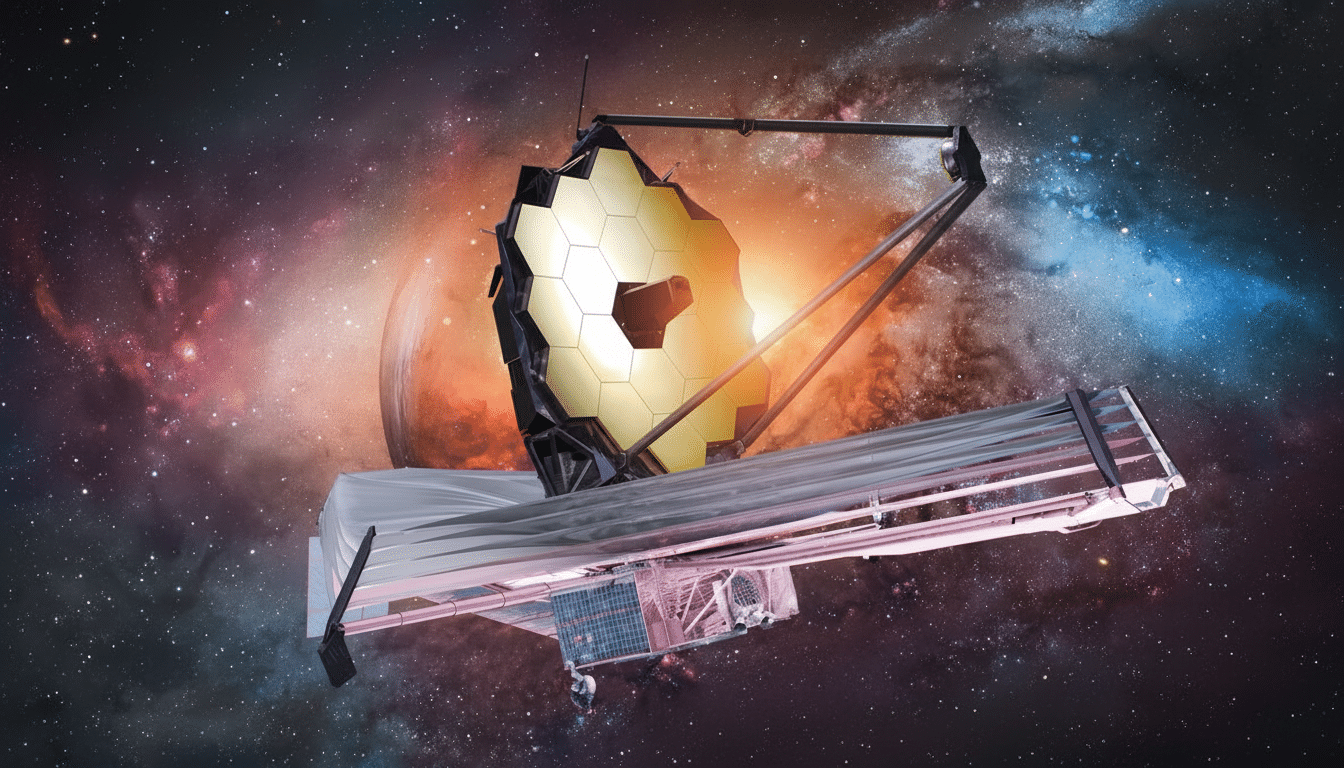A stunning new photo from the James Webb Space Telescope captures a massive young star firing off twin, supersonic jet streams that slash through the outskirts of the Milky Way. The object, known as S284p1, is still growing in mass and comes in at about 10 times the mass of the sun. Its opposing outflows span some 8 light-years in total end to end — almost double the Sun–Alpha Centauri separation — which makes it one of the most extended protostellar jets observed around a massive star.
The sighting, made by an international team with Webb’s infrared eyes, gives a glimpse of how heavyweight stars come together — and it may help astronomers better understand the history behind our own heavy star components. Although we often see narrow beams in astronomy images emanating from baby Sun-like and more-massive protostars, very well-defined jets of the latter type are rare. Those findings, which have been accepted for The Astrophysical Journal, suggest that jet size and power increase with the mass and growth rate of the star forming.

What the new image reveals
S284p1 is 15,000 light years away in the star-forming complex Sharpless 2-284, on the outskirts of the galaxy. Webb’s Near-Infrared Camera (NIRCam) follows shock-excited molecular hydrogen along the jet, pin-pointing a string of knots and bow shocks where supersonic gas jettisoned at high speed smashes into surrounding material. The beams are nearly perfectly bipolar, a signature of an active rotating disk and magnetic fields funneling falling material into narrow counter-rotating streams.
The scale sets it apart. Normal Herbig–Haro jets from low-mass protostars are several hundredths to a few light-years in length. Here, the outflow extends about 8 light-years across, and material is racing away at hundreds of thousands of miles per hour. The processing was done by the Space Telescope Science Institute, and in the filaments and cavities that are sculptured by it we see a textbook example of how jets shape their birthplaces.
The rarity of observing the jets from massive protostars
Big stars develop fast and deep in dust They form within a few hundred thousand of years, while remaining embedded into their natal cocoons. Their high-energy radiation and extreme winds can disrupt the disks that feed them, leaving clean, uninterrupted jets tough to spot. Previous telescopes have been unable to see through the obscuring cocoons. Webb — a combined mission of NASA, ESA and CSA — views in infrared light that can penetrate the dust, revealing structures otherwise hidden from optical observatories.
This long, bright molecular-hydrogen outflow from a massive protostar is rare in our Milky Way galaxy, Yu Cheng of the National Astronomical Observatory of Japan and colleagues said. One of the work’s authors, Jonathan Tan of the University of Virginia and Chalmers University of Technology, said “the highly ordered flow was surprising,” because there was no guarantee that in such a turbulent environment, everything would proceed so symmetrically. The research has been accepted in The Astrophysical Journal with image support from the Space Telescope Science Institute.

Clues to the birth of stars in metal-poor regions
Sharpless 2-284 is low in “metals” (elements heavier than hydrogen and helium) – what astronomers call a low-metallicity region. Heavy elements aid the cooling and fragmentation of gas; with less of it, many models expect a more turbulent, less calm growth for massive stars. But S284p1’s jet appears extremely orderly, implying that it’s reasonable to society — at least sometimes — even scarce-metallicity disk-driven accretion.
That matters for cosmic history. The first-generation stars were born out of almost pure gas before successive generations polluted the galaxy with heavier elements. Observations like this offer a laboratory in our own backyard for those conditions, allowing scientists to test whether magnetized disks and collimated outflows might also have governed the births of the universe’s very first giant stars.
Jets that carve and steer star formation
Protostellar jets are not just pretty to look at. It carries off angular momentum, so matter can continue to spiral onto the star, and it imparts momentum and energy into its surroundings. For massive protostars, outflow mass loss rates can be ~10⁻⁵ to 10⁻⁴ solar masses per year, based on ALMA studies, powering fast enough kinetic power to mix gas over parsec scales. Over time, this feedback carves out cavities, initiates shock chemistry and can even dictate where the next generation of stars will be sparked.
From S284p1 the smallness of a also indicates compact magnetic fields penetrating the inner disk i.e. magneto-centrifugal launch scenarios are still valid. The observed structure presents a natural laboratory to investigate how accretion, magnetic fields and the radiation pressure scale in the most massive nurseries, an outstanding problem in star-formation theory.
What comes next
Followup spectroscopy with Webb’s NIRSpec and MIRI instruments may help to constrain shock speeds, temperatures, and densities along the jet, while radio interferometers like ALMA and the Very Large Array can map out the accretion disk and identify launch regions. Due to its sheer size, clarity and location in a cloud of metal-poor gas, S284p1 is positioning itself to become a standard against which scientists will calibrate their understanding of how the largest stars in our galaxy — and possibly the earliest ones in the universe — form.

